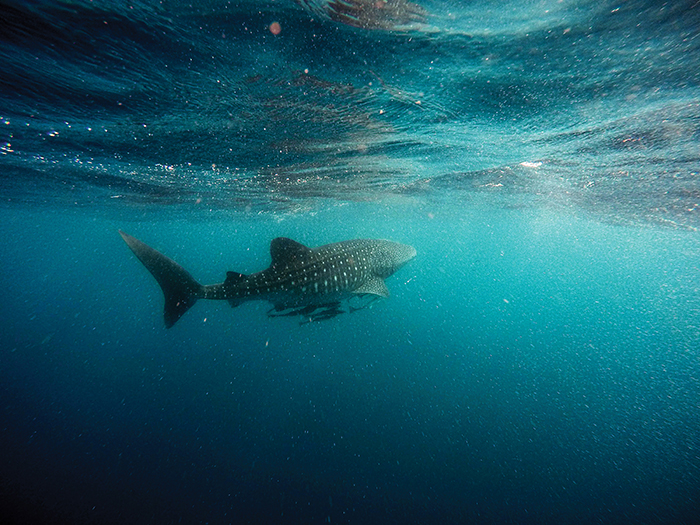
Microfibre ocean pollution
Recent research into the consumption of microplastics by fish in Australian waters found that microfibres from clothing made up the largest portion of plastics ingested (see story page 4). Synthetic fabrics such as polyester, acrylic and nylon represent about 60 per cent of clothing manufactured globally. Microfibres from clothing accounts for about 35 per cent of plastic pollution in the world’s oceans.
Microfibre pollution from clothing can be reduced by washing clothes less frequently, using short wash cycles and colder water, and not using tumble driers. The GUPPYFRIEND bag has been scientifically verified as effective in catching microfibres from clothing in-wash. A range of devices that can be fitted to washing machines is also available, such as the PlanetCare microfibre filter, which has been assessed by several European agencies. In 2021, the Australian Government, as part of its National Plastics Plan, agreed to work with the sector to install microfibre filters in all new washing machines by 2030, so that plastic microfibres will be captured before they flow into waterways from households across Australia.
More information:
https://www.oceancleanwash.org,
https://planetcare.org, https://en.guppyfriend.com. f
Reducing shark bite-off
Western Australian researchers have tested the effectiveness of three shark-deterrent devices, finding that all three devices reduced shark depredation of fish on lines by 65 per cent overall.
Each device used a different operating system – an electrical field, magnetic field or acoustics. Researchers tested the devices for hundreds of hours at locations between the Abrolhos and the Montebello Islands in WA to assess their effectiveness.
The research was funded by the WA Recreational Fishing Initiatives Fund. It has also provided insight into shark behaviour, shark biology and information about other species that may be contributing to the depredation of caught fish before they are landed.
Read more details about the research in FISH magazine ‘Device trials underway to keep sharks from the catch’, in March 2021, or in the January newsletter of the Western Australian Fishing Industry Council. f
Proposed name changes
Feedback is being sought on five proposed additions to the Australian Fish Names Standard and two fish name changes.
Proposed additions to the Standard include:
- Western Rock Octopus for Octopus Djinda;
- Abalone for Haliotis spp.;
- Orange-footed Sea Cucumber for Cucumaria frondose;
- Whelks for Muricoidea and Buccinoidea; and
- King Crabs for Lithodidae.
Applications have also been made to change the common name of Lutjanus bitaeniatus from Indonesian Snapper to Whitetip Snapper and Wattsia mossambica from Mozambique Seabream to Large-eye Seabream.
Public consultation on the proposed names will close on 23 April 2022. The Fish Names Committee has an online survey to allow for quick feedback.
For more details, or to receive the Fish Names newsletter and survey notifications, email fnc@frdc.com.au, or visit www.frdc.com.au/subscribe. f
Word-wise
Common terms used in assessing the sustainable management of fisheries stocks include the following:
Maximum Sustainable Yield (MSY): The maximum average annual catch that can be removed from a fisheries stock on an ongoing basis under constant environmental conditions. MSY defined in this way assumes that fish stocks reach equilibrium and makes no allowance for productivity changes and environmental variability.
Maximum Economic Yield (MEY): The level at which consistent extraction of a fisheries stock maximises the economic returns from a fishery. This is often lower than the maximum sustainable yield.
Biomass Maximum Sustainable Yield (BMSY): Average biomass corresponding to maximum sustainable yield. A target reference point estimated using a stock assessment model.
Fishing Mortality Maximum Sustainable Yield (FMSY): The fishing mortality rate that, at equilibrium, is expected to produce the maximum sustainable yield.
Unfished biomass: Biomass that existed, or that would exist, for a stock that has not yet been fished, or if it had not been fished (also called the ‘unfished’ or ‘unexploited’ biomass or unfished level). This may refer to an estimated historical biomass level before fishing began, or the current biomass that would have existed had no fishing occurred. f





